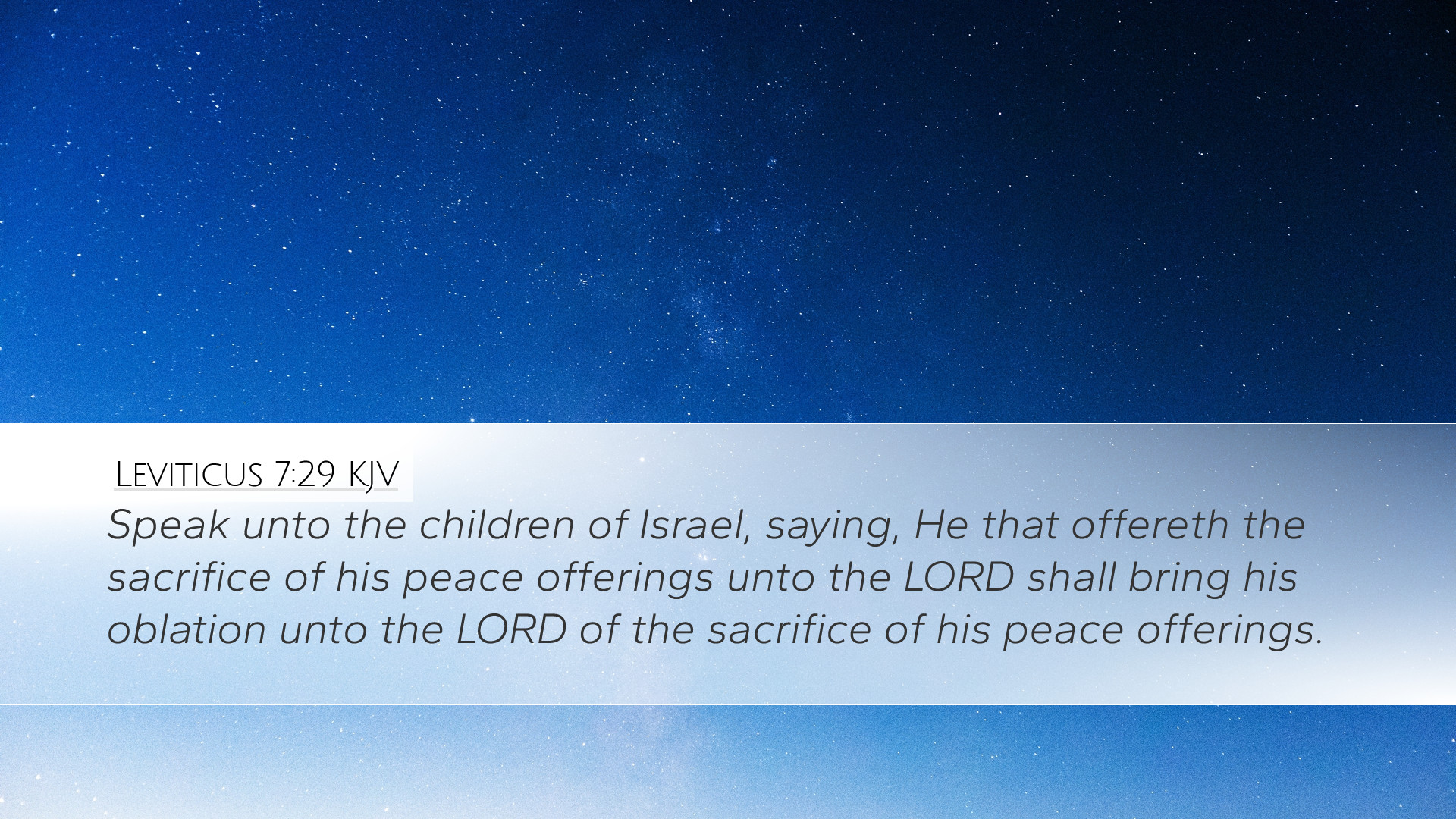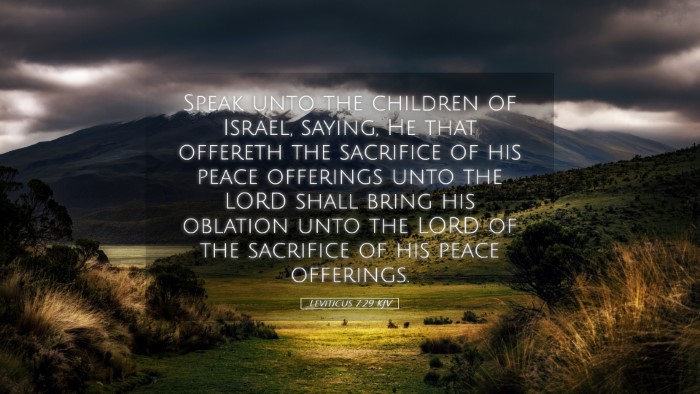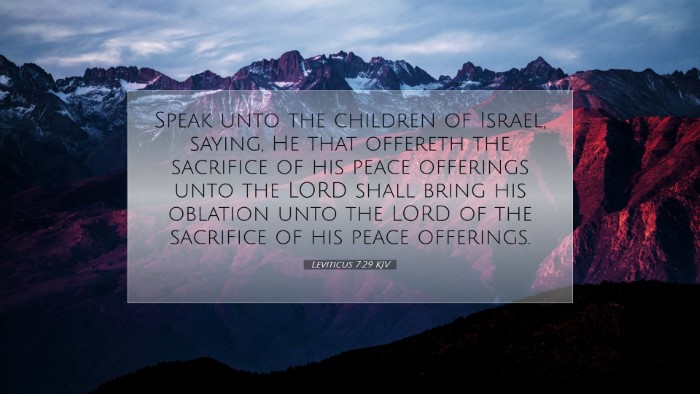Commentary on Leviticus 7:29
Leviticus 7:29 states: "Speak unto the children of Israel, saying, He that offereth the sacrifice of his peace offerings unto the Lord shall bring his oblation unto the Lord of the sacrifice of his peace offerings." This verse serves as a pivotal guideline regarding the peace offerings and their associated rituals, emphasizing both participation and the manner in which these sacrifices should be conducted.
Contextual Overview
The Book of Leviticus is rich with laws and instructions concerning worship and the sacrificial system, demonstrating God’s holiness and the necessity of proper worship. The peace offering, known as the zebach shelamim, signifies communion with God, allowing worshipers to express gratitude and fellowship.
Insights from Matthew Henry
Matthew Henry highlights the significant aspects of the peace offering as a part of a covenant relationship with God. He notes:
- Thankfulness: The peace offering is a response to God’s goodness, representing the worshiper’s acknowledgment of God’s blessings.
- Corporate Worship: Henry reflects on the communal aspect, where both the offerer and the priest partake of the sacrificed animal, symbolizing fellowship with God and the community of believers.
- Voluntary Act: He underscores that peace offerings do not stem from obligation but from a voluntary desire to express gratitude and devotion to God.
Insights from Albert Barnes
Albert Barnes provides an analytical look at the peace offerings and their implications in ancient Israel:
- Significance of Offerings: Barnes elucidates that the peace offering encapsulates joy and celebration. It is an expression of peace with God and among fellow worshipers.
- Divine Commandment: He underscores that the sacrificial system was ordained by God, serving as a reminder of His holiness and the seriousness of sin.
- Orderly Worship: The directive to bring the oblation to the Lord emphasizes the need for order in worship, reflecting divine authority and the required respect when approaching God.
Insights from Adam Clarke
Adam Clarke’s commentary elaborates on both the ritualistic and theological dimensions of the peace offering:
- Personal Connectivity: Clarke asserts that this offering allows worshipers to connect personally with God, promoting a relationship built on peace and mutual respect.
- Symbolism of Sacrifice: He notes that the act of sacrifice represents more than mere adherence to law; it signifies the surrender of self and acknowledgment of God’s supreme worth.
- Spiritual Implications: Clarke reflects on how these offerings foreshadow the ultimate peace made possible through Christ’s sacrifice, connecting Old Testament practices with New Testament fulfillment.
Theological Implications
The implications of Leviticus 7:29 extend beyond mere ritualistic practice:
- Holiness and Approachability: The verse illustrates God’s invitation to offer peace; it stresses both His holiness and willingness to accept offerings that come from sincere hearts.
- Community and Fellowship: The communal aspect of the peace offerings highlights the nature of the church as the body of Christ, called to live in unity and love as we worship together.
- Anticipation of Christ: This sacrificial system points towards the ultimate peace offering—Jesus Christ—who fulfills the need for reconciliation between God and humanity.
Application for Today’s Believers
In applying Leviticus 7:29 to contemporary faith life, we discover multifaceted lessons:
- Gratitude in Worship: Just as the peace offerings were expressions of thanks, modern believers are called to approach God with grateful hearts, recognizing His ongoing provision and grace.
- Fellowship with God and Others: Emphasizing the importance of community, practitioners today are encouraged to cultivate relationships that honor God, grounded in mutual respect and love.
- Obedience to Divine Instruction: The structure of worship detailed in this verse invites us to reflect on our own practices and to ensure they align with biblical principles of worship.
Conclusion
Leviticus 7:29 serves not only as a historical and cultural artifact but also as a spiritual touchstone, inviting believers to explore deeper meanings in relationship with God, Christ, and one another. By examining the insights of various commentators, we are offered a rich tapestry of understanding that can deepen our worship, enhance our communal relationships, and encourage a life marked by peace and gratitude.


